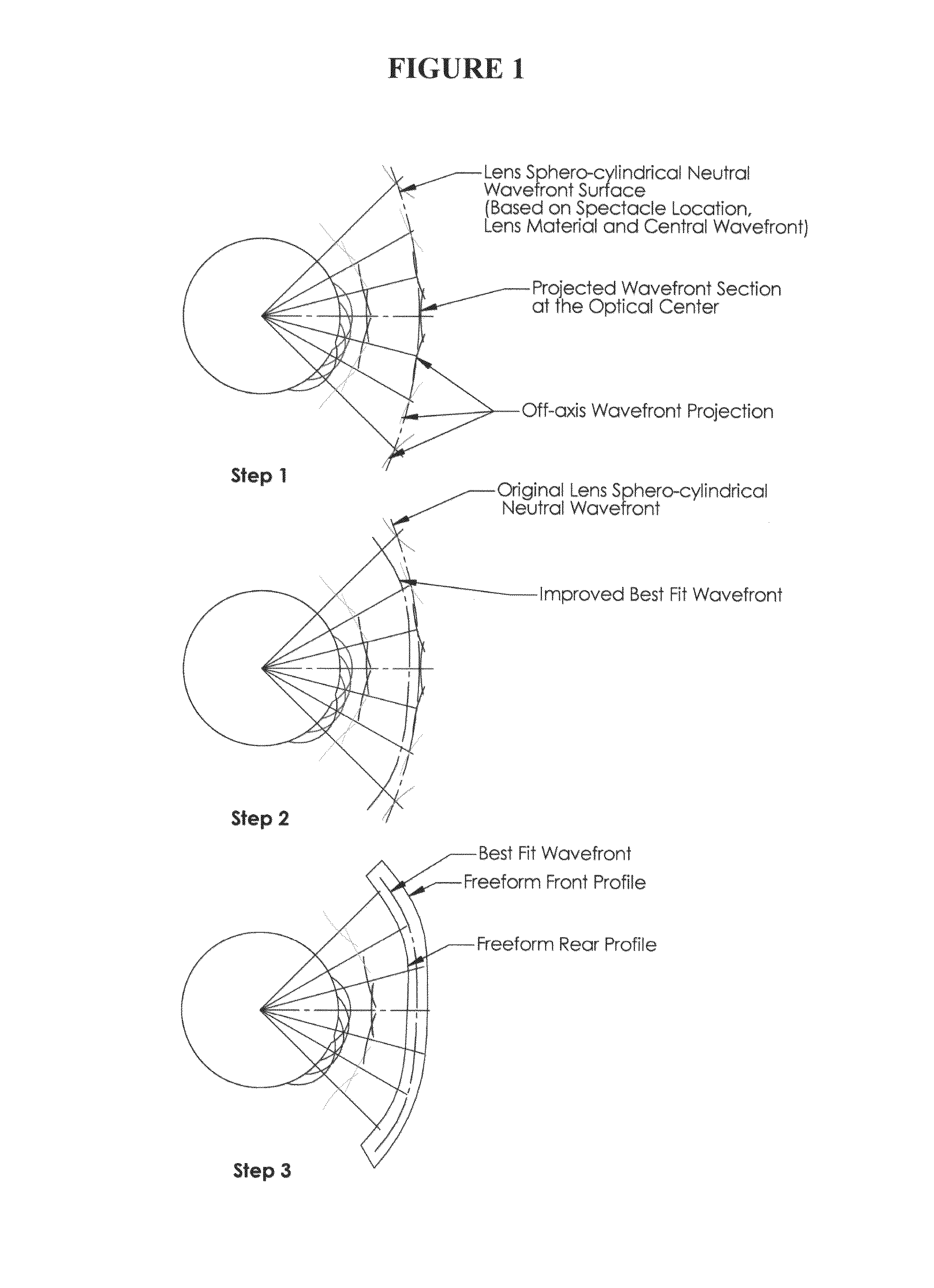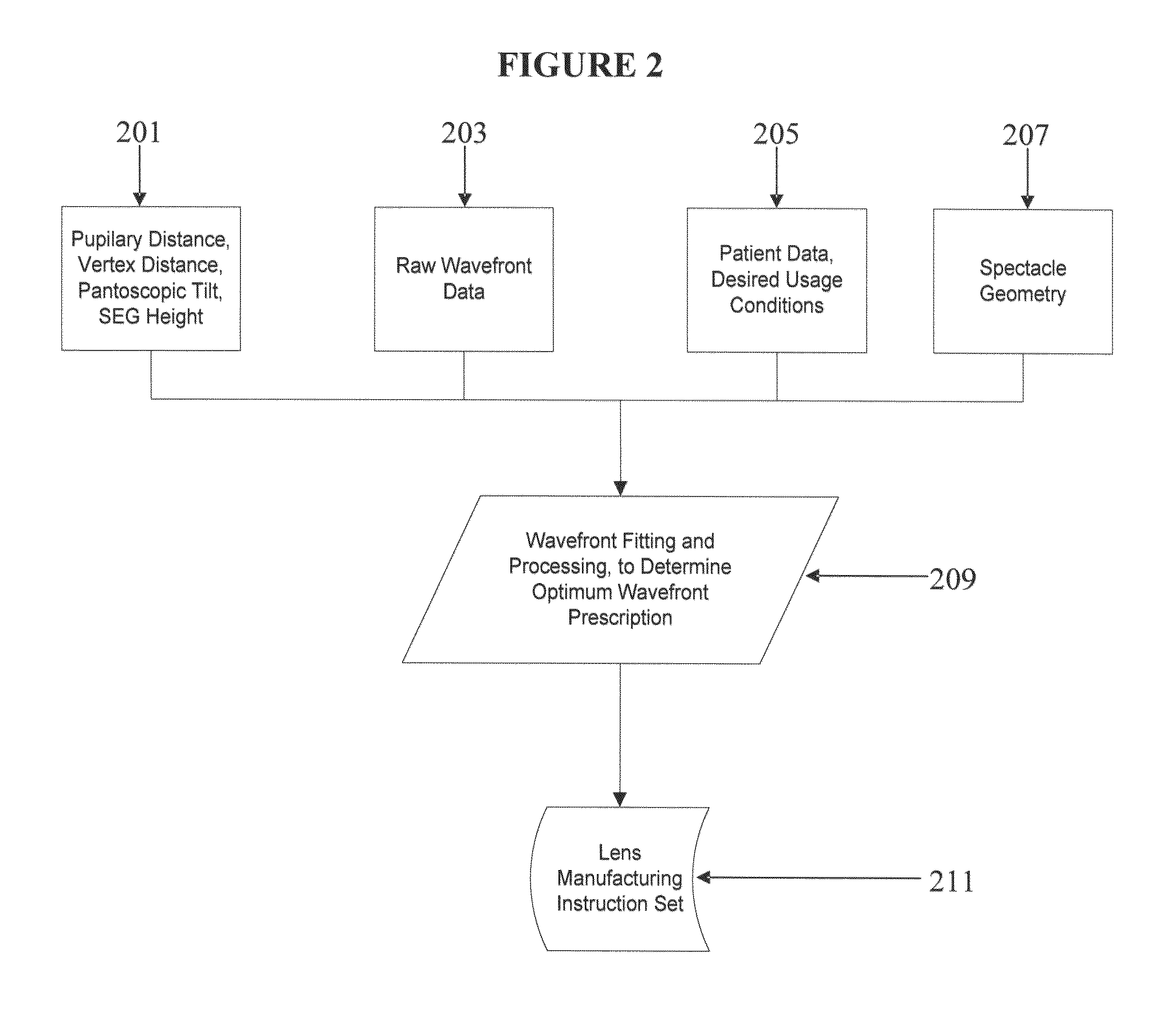Methods of designing progressive addition lenses
a technology of progressive addition and lens, applied in the field of progressive addition lens, can solve the problems of many people experiencing distortion when looking off-center outside the central region, degrade the image quality on an image plane, and vision problems
- Summary
- Abstract
- Description
- Claims
- Application Information
AI Technical Summary
Benefits of technology
Problems solved by technology
Method used
Image
Examples
example 1
[0090]FIGS. 7A-B illustrate exemplary target sphere maps for two customized progressive designs for plano lenses with +1.5D add powers at the center of the power progression and +2D add powers at the bottom of the power progressions. FIG. 7A is a representation of the target sphere power map where the far zone is represented from 0-90 units and has a plano power of 0D. The near zone is represented from 135-140 units and has a power of +2D. The non-linear sphere progression rises from OD power at 90 units to +2D power at 135 units. The non-linear power progression rises steeply from 90 units to approximately 110 units and rises slowly from 110 units to 135 units. This flexibility allows for the creation of a progressive design where the progression can start significantly above or below the 180 degree line located at the geometrical center of the progressive design. In this way, lenses can be manufactured to minimize the perceptible change in power between zones that a wearer of spec...
example 2
[0092]FIG. 8A illustrates an exemplary slope of a sphere non-linear power progression that rises sharply then rises slowly in accordance with one embodiment of the invention. The far zone possesses a plano power of 0D and is represented from 0-65 spatial units. The non-linear sphere progression rises sharply from 0D power at 65 units to +1.5D power at 90 units. This is followed by a slow power rise of +0.5D from 90 to 105 units. The near zone possesses a power of +2D and is represented from 105-140 spatial units. This flexibility allows for the creation of a progressive design where the intermediate power progression varies along the geometrical center.
[0093]FIG. 8B illustrates an exemplary slope of a sphere non-linear power progression that rises slowly then rises sharply in accordance with one embodiment of the invention. The far zone possesses a plano power of 0D and is represented from 0-65 spatial units. The non-linear sphere progression rises slowly from 0D power at 65 units t...
example 3
[0094]FIG. 9 illustrates an exemplary Intermediate Power Adjustment Chart of an embodiment of the invention. The first column of the chart provides an initially measured intermediate power add at 24 inches and an initially measured near power add at 16 inches. These measurements are obtained by an optometrist, a trained optical technician using a phoropter, with trial lenses, or by any other technique known in the art where the reading chart is held at a specific distance from the spectacle plane to determine the intermediate and reading add power prescriptions. A chart can be constructed by inputting the intermediate and near powers measured at 16 and 24 inches and interpolating the powers in between the 16 and 24 inches and extrapolating to 30 or more inches as desired.
[0095]The second column of the chart provides a patient specific working distance between the spectacle lens plane and the reading material (e.g., computer screen, LCD screen, etc) and a corresponding recommended ad...
PUM
 Login to View More
Login to View More Abstract
Description
Claims
Application Information
 Login to View More
Login to View More - R&D
- Intellectual Property
- Life Sciences
- Materials
- Tech Scout
- Unparalleled Data Quality
- Higher Quality Content
- 60% Fewer Hallucinations
Browse by: Latest US Patents, China's latest patents, Technical Efficacy Thesaurus, Application Domain, Technology Topic, Popular Technical Reports.
© 2025 PatSnap. All rights reserved.Legal|Privacy policy|Modern Slavery Act Transparency Statement|Sitemap|About US| Contact US: help@patsnap.com



